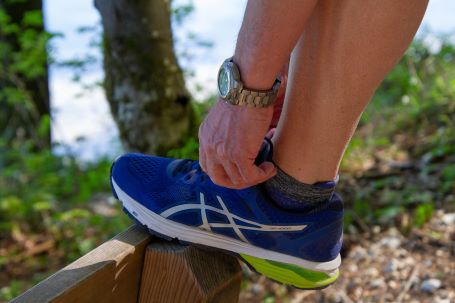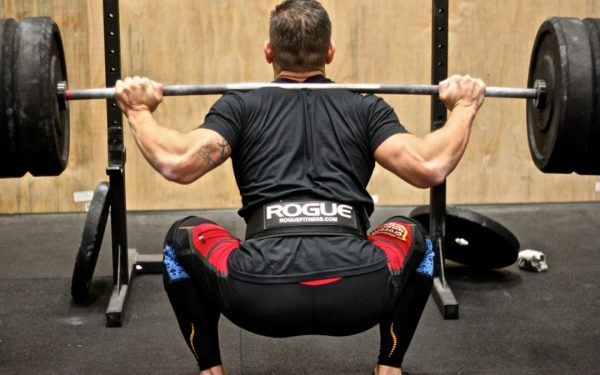The most common form of heel pain is a condition known as plantar fasciitis. If you’ve ever experienced this condition before, then you know it can disrupt your daily life and have a big impact on your exercise routine.
Roughly one million people a year are diagnosed with plantar fasciitis, and it impacts as many as 10% of the adult population in the United States including myself. Whether you want to treat an existing case of plantar fasciitis or prevent it from happening altogether, this guide can help you learn more about the condition and how to overcome its symptoms as well as what works for me.
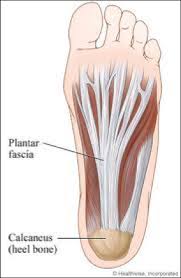
What is Plantar Fasciitis?
The plantar fascia is a thick band of tissue that runs underneath the bottom of each of your feet. It connects your toes to your heel. The plantar fascia is what supports the arch of your foot, and it maintains a set level of tension in order to give that foot flexibility.
Over time, the plantar fascia can become inflamed. All types of irritations or inflammation can cause the plantar fascia to act up. In most cases, any irritation to the tissue itself is known as plantar fasciitis. This pain can manifest itself in a number of ways, all of which can potentially interrupt normal activities. Although symptoms are more noticeable in the morning, they can limit your routine and get worse over time, so treatment is typically necessary.
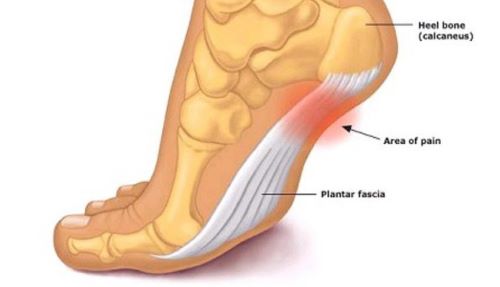
Symptoms of Plantar Fasciitis
Not all pain in the foot is necessarily plantar fasciitis. Although it is a relatively common foot condition, it is important to learn the specific symptoms that could indicate the presence of plantar fasciitis. Treatment for foot, heel or arch conditions is not universal, so determining the exact diagnosis is a critical first step. Keep in mind that not everyone experiences these symptoms in an identical way. Some people may only notice a few symptoms, or those symptoms may only appear at certain times of the day.
The most common symptom of plantar fasciitis is stabbing pain near the heel of the foot. This can be a dull, throbbing pain, but it can also be acute and very painful. For some people, it can feel like the pain is emanating directly from the heel. For others, it might feel like the pain is directly in the arch of the foot. Sometimes, the pain itself can transfer, but it will always be underneath, rather than on top, of the foot.
Plantar fasciitis can appear suddenly, sometimes becoming a problem overnight. However, it can also be a slow, gradual process. You might notice that your heel feels stiff for a few mornings and then forget about it for the rest of the day. This happens because plantar fasciitis almost universally feels worse in the morning. This is when the tissue of the plantar fascia is the most stiff. Once you wake up and put pressure on the foot, it can be very painful.
The good news is that for many people, plantar fasciitis plain goes away throughout the day. It can, however, reappear after a long period of sitting still or reclining. Often, the symptoms of plantar fasciitis go away during exercise. Unfortunately, they tend to reappear shortly after exercise, and the pain underneath the foot may get worse as a result.
In the overwhelming majority of cases, plantar fasciitis is only present in one foot at a time. If you notice pain in both feet that appears simultaneously, it could be from a new pair of shoes or simply a different foot problem altogether.
How to Prevent Plantar Fasciitis
If you’ve never experience plantar fasciitis, or if you’ve experienced it in the past and want to avoid it in the future, there are some techniques that can help you prevent the condition altogether. First, there are some risk factors that are worth noting. Women, for example, report plantar fasciitis far more often than men. Those who are overweight or obese also tend to experience plantar fasciitis more than those who are not overweight. Extra weight may put additional pressure and stress on your feet and your plantar fascia, resulting in greater inflammation and more pain. If you are committed to preventing plantar fasciitis, one option may be to lose weight in a healthy manner.
Wear Good Shoes
Footwear can also make a big difference when it comes to preventing plantar fasciitis. Whenever possible, choose shoes that support your feet, specifically the arch of the foot. High heels and flip flops are typically the least supportive option, while athletic shoes are the best option. Walking barefoot may also be problematic, even around the house. Those who experience recurring plantar fasciitis may find that it is better, long term, to wear athletic shoes around the house to minimize discomfort although some are better than others. Personally, I have had some luck finding shoes that helped my plantar fascitis, we will get into more on that later.
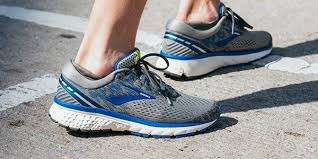
Related: Best Running Shoes for Plantar Fasciitis
Untuck Your Sheets
Believe it or not, the way you make your bed could be a factor in whether you suffer from plantar fasciitis. One way to prevent plantar fasciitis is to untuck the bedsheets at the end of your bed. When the sheets are tucked in tightly, it can cause you to point your toes while you sleep each night. This can create consistent tightness and stress in the arch and heel of the foot, creating extra work and irritation to the plantar fascia. By untucking your sheets, you can relax your feet and allow the fascia to relax as well.
Spend Less Time on Your Feet
Plantar fasciitis is also more common if you spend a lot of time on your feet. This is especially true for those who have occupations that require them to stand or walk for long periods of time. For those with chronic plantar fasciitis, the best means of prevention could be switching to a job that requires less time on their feet.
Stretch the Calf and Plantar Fascia
Another common cause of plantar fasciitis is a tight calf or Achilles tendon, which is the tendon that attaches the calf muscle to the heel of the foot. If this tendon is taut and under pressure, then the plantar fascia will also be tight and more likely to become inflamed. A great way to minimize the risk of plantar fasciitis is to take time daily to stretch the calves. Standing or dynamic stretches are both helpful, but a professional massage can also loosen up the lower legs and the feet, helping to minimize the risk of plantar fasciitis in the future. It is also beneficial to stretch the plantar fascia itself. See the video below for some good stretches.
Go Low-Impact
While staying active is usually a good thing, it is worth noting that plantar fasciitis is often tied to people who are extremely active. This happens simply because those who walk or run a lot are naturally spending time on their feet and therefore causing inflammation to the plantar fascia. For those who want to avoid plantar fasciitis, it may make sense to avoid these types of physical activities and instead choose low-impact options. Exercises like swimming or riding a bike won’t aggravate or inflame the plantar fascia, and they can still deliver the mental and health benefits of regular activity.
Anti-Inflammation Diet
Finally, it may be possible to prevent the development of plantar fasciitis by choosing an anti-inflammation diet. Since plantar fasciitis is, essentially, an issue caused by inflammation, a diet that seeks to minimize inflammation could be a key preventative measure. A diet specifically designed to reduce inflammation is one that includes little or no sugar, alcohol and processed foods. It should be heavy in vegetables, fruit, nuts and lean proteins. As a bonus, a healthy diet like this may lead to weight loss, which is another risk factor in the development of plantar fasciitis.
Plantar Fasciitis Treatment
Dealing with plantar fasciitis can be incredibly frustrating. Most people who experience plantar fasciitis will struggle for upwards of six months before all symptoms disappear. It is a condition that does have some extreme treatment methods, but most of the common treatment options take time, effort and consistency. Fortunately, many of the treatment options are low-cost and can be done in the comfort of your own home.
Rest
One of the first treatment options you may want to try is rest. If the plantar fascia is inflamed, then it needs to rest. If you continue to walk miles a day, stand all day at your job or go for an evening run, you won’t be giving the fascia a chance to rest. Whether you seek out the advice of a doctor or you do treatment research on your own, resting will almost certainly be the best place to start. You may wish to take a week off from any unnecessary activity and go from there, but be prepared to avoid high-impact activities for even longer.
Medication
Another very simple treatment method to try is medication. Typically, people with plantar fasciitis don’t need pain medication. Instead, it is important to look for a medication that will stop inflammation and address the root cause of the pain. A nonsteroidal anti-inflammatory drug, or NSAID, is available without a prescription and can be very helpful if used on a temporary basis. Examples of NSAIDs that might help resolve plantar fasciitis include ibuprofen and Advil, among many others.
Buy Good Shoes – My Story
Here we are back on the shoe topic again, but it is important. I’ll tell you my shoe story to help make the point.
Once I realized I had plantar fasciitis I decided I had to get some good running shoes with better support than the ones I currently had. I went to a store that sold shoes for runners and had them look at my feet and give me the best shoes for support with my high arch feet. They brought out a few pairs of shoes for me to try, I bought the pair I thought felt best. Unfortunately, they didn’t help.
But…
Six months later I went back to the same store and did the same thing all over again, and it worked! I found the most comfortable and supportive shoes I had ever worn in my life, I loved them and within 2 weeks my plantar fasciitis was gone! It was amazing!
Unfortunately, the shoes eventually wore out and when I went back and got another pair of the same shoes they didn’t work as well, my feet had changed and I was massively bummed. Now I am still looking for my next great shoe to help with my foot pain.
I am sure you are wondering what shoe I used that worked so well for me. It was the Mizuno Wave Inspire 14, best shoe I’ve ever worn. My wife, who is also an avid runner, swears by the Brooks Ghost and I hear the Brooks Glycerin 16 and the Asics GEL-Nimbus 20 are good too. I will likely try one of those next. None of those shoes listed are cheap so be prepared to spend some cash if you consider any of them.
The shoes definitely make a big difference but the right shoe is not easy to find. Do your homework before buying. Here is our list of the best running shoes for people with plantar fasciitis, this would be a good place to start.
Morning Foot Massage
You may notice, like many others, that plantar fasciitis pain is worst first thing in the morning. The plantar fascia is stiff, yet most of us get out of bed in a hurry and walk barefoot on the floor: a recipe for continued discomfort. A simple treatment option that has a lot of success for people is taking five minutes to massage and warm up the arch of the foot prior to standing up and getting out of bed. You might use a heater on the bottom of the foot or just rub it with your hands. The idea is to “warm up” the plantar fascia so that it can begin working right away with less inflammation. Another good option would be to keep a tennis ball by your bed and roll your foot on that for a good massage to loosen it up before walking.
Plantar Fasciitis Night Splint
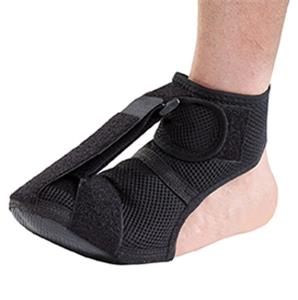 One more way to treat plantar fasciitis without medical intervention is to invest in a night splint. There are a number of products on the market that are reasonably priced and essentially force your foot to stay in a certain position overnight. A night splint can be awkward to sleep it at first, but there are virtually no side effects. Using a night splint can be a simple solution, and it could be enough for those with mild plantar fasciitis pain although it can be uncomfortable to wear while trying to sleep.
One more way to treat plantar fasciitis without medical intervention is to invest in a night splint. There are a number of products on the market that are reasonably priced and essentially force your foot to stay in a certain position overnight. A night splint can be awkward to sleep it at first, but there are virtually no side effects. Using a night splint can be a simple solution, and it could be enough for those with mild plantar fasciitis pain although it can be uncomfortable to wear while trying to sleep.
I have tried one of these before and found it annoying to wear and I stopped using it. It didn’t seem to help either but some people swear by them. They are relatively cheap so it is something to consider as they do work for some people.
Plantar Fasciitis Shoe Insert
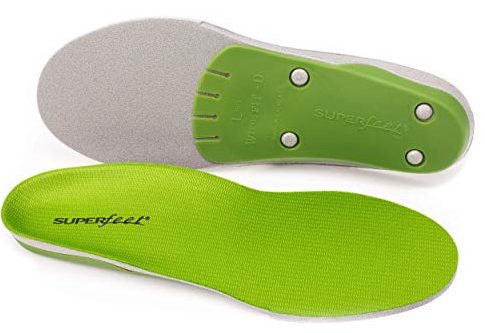
With a physical therapist, you can also explore the option of inserts for your shoes. Orthotic inserts are non-invasive, and they can fit into your existing shoes. This is especially helpful for those who have to stand or walk around for work on a regular basis. By better distributing the weight across the foot and supporting the arch, you can reduce the discomfort of plantar fasciitis.
You can also buy the plantar fasciitis shoe inserts in stores. I have had some success with the inserts myself but you have to go with the more expensive ones you get from Dick’s Sporting Goods or a store that specializes in running shoes. I have NEVER had any success with the ones you buy at the drug store, sorry Dr. Scholls.
I have had success with the Sof Sole high arch insoles that I bought at Dick’s, the only downside with these is they are thick and they absorb a lot of sweat and can get pretty stinky, they definitely helped though. I am currently using the Superfeet Orange insoles and they are working really nicely as well providing extra support and cushion for the heal. My foot pain is nearly gone (again) after having used them for only a couple of weeks. The downside with the Superfeet Orange is that they are rather expensive at $55 for a pair.
Physical Therapy
For those with severe plantar fasciitis, or those who have tried all of the methods above with little success, it may be time to explore further medical options. Physical therapy is a non-invasive step that can offer a number of rewards. A trained physical therapist can show you specific stretches and movements that can reduce the symptoms of plantar fasciitis in the short term and eliminate the issue altogether in the long term. With instruction, you may also find it beneficial to use athletic tape. A physical therapist can show you how to tape the arch of your foot in order to provide additional support and reduce the burden and strain on the plantar fascia.
Steroids and Surgery
If all of the treatment options already discussed are unsuccessful, then it might be time to explore invasive options. While these are more expensive and carry some risk, they can be an effective solution for some people. The first option is a steroid injection. This means that steroids are injected right into the tender part of your plantar fascia. While this can lead to immediate pain relief, it is often not a long-term solution. Multiple injections in a row can also cause more problems to the fascia in the long run, so it is important to discuss future plans with your doctor in advance. Finally, those struggling with plantar fasciitis can turn to surgery. This procedure detaches the plantar fascia from the heel bone, limiting future activities. While this does reduce the pain, all other options should be exhausted first.
What’s Worked For Me
I’ve tried many of the things on this list and only a couple of them have really made any difference for me. That doesn’t mean you will be the same but I can tell you what worked for me and what didn’t.
The massaging of the feet can feel good but it will only provide temporary relief at best. The night splint was uncomfortable and didn’t work as well as I had hoped. The stretches also bring temporary relief but I have never had great success with them long term. To be fair though, I don’t do the stretches consistently enough to expect much in the way of results so it’s mostly my own fault.
I have had great success with the shoes though. As I said earlier, the Mizuno Wave Inspire 14 was a huge help to me and I am looking at other shoes that may help too. Don’t just choose the one that works for me though, go to the store and try on shoes with good support until you find the ones that work for you. It can be hard to find the right pair, take your time and be choosey.
I have also had some good results with the insoles but you should get the better ones you find at stores that sell running shoes rather than the cheap ones you get at the drug store. The more expensive ones are better and they are worth it. The ones that worked best for me are the Superfeet Orange and the Sof Sole high arch insoles.
Again, what works for me won’t necessarily work for you. My plantar fasciitis was on the mild to moderate side, if yours is more severe you will most likely need to do more than I did.
Plantar Fasciitis Wrap Up
Plantar Fasciitis isn’t easy to get rid of and not all the things listed above will work for you. Different things work better for different people. If one thing doesn’t work then try something else and combine things until you find what works. If all else fails, seek the help of a physical therapist or a foot doctor. Plantar Fasciitis generally won’t just go away on its own but if you follow this plantar fasciitis treatment guide you should be able to get it under control fairly quickly.

Ryan is a former college wrestler and lifelong fitness fanatic with over 25 years in the industry. He’s run half marathons, tackled mud runs, placed in body transformation contests, and coached everything from wrestling to girls’ soccer.
Along the way, he’s tested hundreds of supplements and built a deep well of supplement knowledge. His work has appeared in Muscle & Strength, Testosterone Junkie, The Sport Review, and more. Today, he’s the editor-in-chief of this site, still training hard and helping others reach their goals. Connect with him on LinkedIn below.

